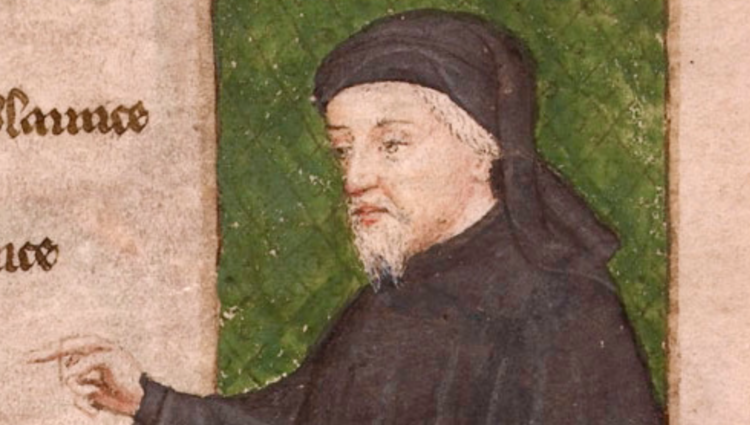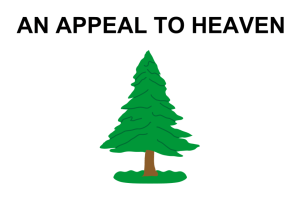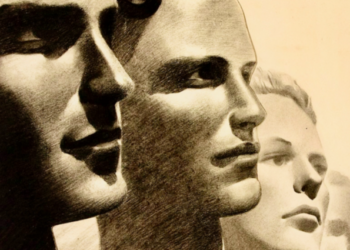Some people frolic in the European Middle Age, whereas most people hearing that designation think hair loss and weight gain. And that is too bad, because there and then resided Geoffrey Chaucer, the second greatest poet in English. If only the selective reading public knew better, they would be dazzled by his masterwork, The Book of Troilus (mid-1480s, prior to The Canterbury Tales). Moreover, we have been put on notice of its greatness, not only more than once but once again.
But not by Geoffrey Chaucer: Unveiling the Merry Bard[1]. In it, Mary Flannery seeks to ‘unveil’ the reputation of Chaucer as a fundamentally good-humored chap, what C. S. Lewis has called our ‘supreme poet of happiness’. He is not that, we are told, in two hundred and seven pages consisting of eight chapters and much end matter. Her basic premise bubbling throughout (and sometimes boiling over) is simple: Chaucer is great, Chaucer was a mysogenist (rather than occasionally nodding to a long-standing anit-feminist literary tradition, often ironically).
 Through the lense of dogma, Chaucer’s depictions of women, as well as elements of his marriage, are adduced to convict him. All close calls go against him; for example, mockery of women is sincere, recantations are not. Ambiguity is allowed, but not nuance. There is some adroit literary criticism, but the ideology, though never strident, becomes tireseome. Chapter Five, Laughing at Women, Flannery’s centerpiece, is the nutshell of her complaint. Noting the “disparities” of Chaucer’s work (and life), she allows that the bright sides are “possible” but implies they are unlikely. Since The Book of Troilus simply does not fit its own narrative devices beyond the veil of dogma, it is virtually ignored.
Through the lense of dogma, Chaucer’s depictions of women, as well as elements of his marriage, are adduced to convict him. All close calls go against him; for example, mockery of women is sincere, recantations are not. Ambiguity is allowed, but not nuance. There is some adroit literary criticism, but the ideology, though never strident, becomes tireseome. Chapter Five, Laughing at Women, Flannery’s centerpiece, is the nutshell of her complaint. Noting the “disparities” of Chaucer’s work (and life), she allows that the bright sides are “possible” but implies they are unlikely. Since The Book of Troilus simply does not fit its own narrative devices beyond the veil of dogma, it is virtually ignored.
On the other hand, the actual reminder of the greatness of The Book of Troilus is David Wallace’s Geoffrey Chaucer: A New Introduction[2] (ommited, as are the other sources I will cite, from Flannery’s text and bibliographies). Within his prescribed limits (a bit more than forty thousand words), Prof. Wallace has produced a superb introduction: supple, authoritative, fresh, energetic.
 The seven chapters are: Beginnings; Schoolrooms, Science, Female Intuition; A Life in Poetry; Poetry at Last: Troilus and Criseyde; Organizing, Disorganizing: The Canterbury Tales; Something to Believe In; and Performance and New Chaucers. The final thirty pages provide a timeline (helpfully not limited to Chaucer’s own life) and a useful index between which is the bibliography: one hundred and fifty-three primary and secondary sources, five manuscript collections, fourteen multi-media and theatrical items, and ten web-based sources. Here and there within the chapters are sixteen illustrations and two boxes, a mnemonic device for the four-fold method of interpretation and the fragment order of the Canterbury Tales in the Ellesmere manuscript. A feature worthy of note is Prof. Wallace’s use of Chaucer’s own Middle English in his quotations (with marginal glosses). Smack in the middle of the book is Poetry at Last: Troilus and Criseyde.
The seven chapters are: Beginnings; Schoolrooms, Science, Female Intuition; A Life in Poetry; Poetry at Last: Troilus and Criseyde; Organizing, Disorganizing: The Canterbury Tales; Something to Believe In; and Performance and New Chaucers. The final thirty pages provide a timeline (helpfully not limited to Chaucer’s own life) and a useful index between which is the bibliography: one hundred and fifty-three primary and secondary sources, five manuscript collections, fourteen multi-media and theatrical items, and ten web-based sources. Here and there within the chapters are sixteen illustrations and two boxes, a mnemonic device for the four-fold method of interpretation and the fragment order of the Canterbury Tales in the Ellesmere manuscript. A feature worthy of note is Prof. Wallace’s use of Chaucer’s own Middle English in his quotations (with marginal glosses). Smack in the middle of the book is Poetry at Last: Troilus and Criseyde.
First, though, comes our plot, certainly more intriguing than than that of Othello, in five books. During the Trojan War – audaciously marginalized by the narrator – the Trojan Calchas, a soothsayer, predicts the fall of Troy and flees to the Greek side, leaving behind his daughter, Criseyde. Meanwhile, Troilus, a prince of Troy (brother to the great warrior Hector), has mocked his companions for their love-sick talk. As punishment, Cupid hits him in his heart with an arrow, causing him to fall in love with Criseyde. He consults Criseyde’s uncle Pandarus who will help the knight – the code of medieval Courtly Love, i.e. chivalrous romance outside of marriage, demands that rank – to declare his love.
Pandarus manipulates his niece variously (e.g. she’s not getting any younger). After dreaming of Troilus as an eagle, she agrees to receive, and to write, a letter. Later Pandarus contrives a dinner with his niece at which Troilus is hidden. Pandarus does more pandering, and Criseyde agrees to see Troilus, who suddenly appears and – very soon they become blissful lovers. However, Pandarus forewarns Troilus: be true to Criseyde (he could be nothing but), and beware.
Calchas returns: the Greeks will yield Antenor, advisor to king Priam, if Criseyde returns with her father to the Greek camp. She and Troilus discuss their options, at last agreeing that she will go with Calchas but, after a short spell, will return to Troy. Once in the greek camp, however, Criseyde is wooed by Diomede, to whom she surrenders, telling Troilus that, under her father’s watchful eye, it is impossible to return. Troilus is killed in battle by Achilles and ascends to the eighth sphere of Heaven, whence he looks down fondly on those who mourn for him.
Amidst much richnes of context and literary detail, we learn from Wallace of the development of Chaucer’s art, especially of his own representation of ‘Chaucer’. We learn further that Chaucer worried over his “newly-hatching reputation as a besmircher of women,” and that he knew he was now legitimately a poet, one of European breadth who could stand with “Vergil, Ovid, Homer, Lucan and Statius” (a trope, we are told, used by Jean de Meun in the Romance of the Rose, by Dante, and by Boccaccio). I do not exaggerate when I say the book is a page-turner – and that, before we get to the main attraction.
When I first read The Book of Troilus I thought it the most contemporary fiction I had read to that point: a narrator’s movement into and out of the story as well as the consciousness of its characters, the ambiguity of that narrator’s stance, the manipulativeness of Pandarus (Criseyde’s uncle pandering her), the placement of the story within a wider narrative (that of the Trojan War), and its utter reversal from comedy to tragedy. Wallace cofirmes that impression.
In Chaucer’s Prologue, the narrator (or is he? Or perhaps Wayne Booth’s Implied Author?) tells us that he will “God of Loves servants serve” but then allows that he will tell of two troubles, that of Troilus first loving Criseyede and then “how that she forsook him er she deide.” (No spoiler alert there.)
This voice (often addressing the reader in the second person) tells us he will not retell the fall of Troy but does note that Trojan life went on happily during the conflict, not least during the “lusty Veer [springtime],” with Criseyde quite enjoying herself. It is when Troilus scolds his companions for their lamenting talk of love that the narrator interrupts the philosophizing by invoking the god of Love (allegorically? Apparently not): “For sodeinly he hitte him atte fulle,” and Troilus is a gonner.
When the narrator describes Criseyde he does her full justice: “all her lines sowell answeringe / Weren to wommahood, that creature / Was never less mannish” – a verse that concludes “in seeminge.” And that, we shall learn, is the way of the world: a ‘seeminge’. This, however, is in contrast to Troilus, who is what he seems and remains steadfast: “There nas a man of gretter hardinesse / Than he, ne more diesired worthinesse” – utterly unironical.
When Pandarus enters the scene in full the psychologizing – not philosophizing – becomes pointed, whether by straight narration, attributed thought, or dramatized exchange. He is not only vital but the cause of vitality in others. Troilus will moan, Criseyde laugh, argue, and change her mind. And all the while the narrator will intrude: “Now mighte som envious jangle thus: / ‘This was a sodein love. How might it be / That she so lightly loved Troilus / Right fro the first sighte?” Indeed. Yet another implicative thread woven into the fabric, meant to be seen against the opening of the Prologue to Book Three, where we are reminded of the “blissful light” of dawn when Venus is praised as “goodly debonaire [meek]” and “Yhered [praised] for her “goodnesse,” – ironically?
At last we have uncle and niece together, Troilus present but hidden. Near the start of a twenty-four stanza sequence the two converse. But then, after meeting Criseyde, Troilus seems faint of heart, until Pandarus assures him, “Ne dreed thee nevere a deel, / For it shal be right as thou wolt desire.” The passion is intense and prolonged. Troilus travels from body part to body part: “Hire armes smale, Hire streghte bak and softe, / Hire sydes longe, flesshly, smothe and white he began to stroke” – and so on. But it is Criseyde who, as the Wife of Bath puts its, has ‘sovereignty’.
 Later, “This joye na noght ywritten be with inke; / This passeth al that herte may bithinke.” Can we be surprised when Book Three ends with “Troilus’s Song” – though not sung by him? It ends, “And Troilus, in lust and in quiete, / Is with Criseyde, his owene herte sweet.” That, again, is our nearly ubiquitous narrator, who has known all from the start. Ubituitous, yes, but also nimble. “He keeps us guessing,” writes Derek Pearsall in his dispositive The Life of Geoffrey Chaucer (1992), “and contributes importantly to that element in the literature of recreation that Chaucer’s court education had taught him was so vital: its discussability.” Chaucer (not unlike his characters) is a performer.
Later, “This joye na noght ywritten be with inke; / This passeth al that herte may bithinke.” Can we be surprised when Book Three ends with “Troilus’s Song” – though not sung by him? It ends, “And Troilus, in lust and in quiete, / Is with Criseyde, his owene herte sweet.” That, again, is our nearly ubiquitous narrator, who has known all from the start. Ubituitous, yes, but also nimble. “He keeps us guessing,” writes Derek Pearsall in his dispositive The Life of Geoffrey Chaucer (1992), “and contributes importantly to that element in the literature of recreation that Chaucer’s court education had taught him was so vital: its discussability.” Chaucer (not unlike his characters) is a performer.
In 1932, C. S. Lewis wrote “What Chaucer Did to ‘Il Filostrato’,” in which he meticulously demonstrates Chaucer’s narrative genius by showing how he departed from Boccaccio’s original Troilus tale. He concludes that the doctrine of chivalrous romantic love is “little palatable to the age in which we live” but that the tale shows “that certain medieval things are more universal… than certain things of the Renaissance” and, presumably, of our age as well.
 Explaining further in his The Allegory of Love: A Study in Medieval Tradition (1936), Lewis comes close to discerning, describing, and accounting for the perpetual timeliness (not quite the same as ‘timelessness’) of Chaucer’s masterpiece. Another of Chaucer’s models, along with Boccaccio’s Il Filostrato, was the Romance of the Rose (one century earlier), a highly allegorized, quintessentially medieval “mirror of love” that Chaucer had translated. Lewis argues that he made something fresh – he does not designate it as modern – precisely because he kept the love dynamic medieval (that is, ritualistic, lofty and earthy) and did away with the allegory.
Explaining further in his The Allegory of Love: A Study in Medieval Tradition (1936), Lewis comes close to discerning, describing, and accounting for the perpetual timeliness (not quite the same as ‘timelessness’) of Chaucer’s masterpiece. Another of Chaucer’s models, along with Boccaccio’s Il Filostrato, was the Romance of the Rose (one century earlier), a highly allegorized, quintessentially medieval “mirror of love” that Chaucer had translated. Lewis argues that he made something fresh – he does not designate it as modern – precisely because he kept the love dynamic medieval (that is, ritualistic, lofty and earthy) and did away with the allegory.
That is, in Book four Cupid (no cute putto archer) is gone, replaced by growing despair. The narrator begins his prologue (each Book has one) with, “But all too litel… Lasteth swich joye.” Once again we realize that what is about to come is a retrospective view. Fate, in the person of Calchis, is at work, he calling himself “cruel fader.” Invoking Apollo and the stars he has decided to undo the harm he has done his daughter (he believes, or does he?), having no idea of her present state. His cynicism is palpable; the narrator is silent.
Pandarus, however, is not. Hearing of the exchange offer, he persuades Troilus to accept. After all, Paris “that is thy brother” has a lover, so “why shaltou nat have another?” Besides, given how much she loves you Criseyde will understand. For her part, Criseyde is deep into the throes of self-pity, marked by “pain, torment, plainte, wo, distresse” and more. Her eyes have “two a purrple ring” from crying, but, after another imprecation from Pandarus, agrees: “I shal doon al my might me to restraine / From weeping in his [Troilus’s] sight.”
Chaucer has dramatized the episode with only the barest narrative commentary, leaving us to witness – and to ponder – the disingenuousness of the actors. He ends the book by wrenching the reader (yet again) back to the higher view of the poem’s Prologue. No one, he says, can understand or tell “The cruel paines of this sorweful man, / That passen every torment down in helle.” And so the reader is ready for the denoument.
Closer to the bone even than Wallace is commentary by E. T. Donaldson in his Chaucer’s Poetry: An Anthology for the Modern Reader (1958), with a richly and conveniently glossed Middle English that makes it accessible to the novice. He reminds us that the narrator is both in and out of the action, a pious servant of love and mere ‘translator’ who will tell us an unhappy love story, a historian relating incontrovertible fact and a onlooker speaking from undeniable experience; the tension, Donaldson rightly reports, is almost unendurable. Just so with the characters of Criseyde and Pandarus, loveable, witty, and conniving, and sincere.
Chaucer begins his final book with references to Phebes (the youthful Apollo, bright as the sun), melted snow, and Zephyrus bringing green leaves; not quite “April wih his showres soote,” for this is immediately followed by a reference to Hecuba, Troilus’ mother and “sorwe.” That foreshadows Troilus’s dream, which he relates to his sister Cassandra (she who knows the future but is never believed). Her exposition, including much mythology and history, covers sixty-two lines and quite organically leads to “Weep if thou wolt, or leef, for out of doute, / This Diomede is inne and thou are oute.” Inevitably, Troilus disbelieves his sister, calling her “thou sorceresse!”
In that state Troilus, “in battle withouten any pere, Save Ector,” is killed by Achilles. The narrator allows that, “And for ther is so greet diversitee / in English and in writing of oure tongue” – that implied author again – “So pray I God that noon miswrite thee.” He is already sending his work on its way – “Go litel book, go litel my tragedye” – to join those – and here we have it – of Virgile, Ovide, Omer, Lucan, and Stace [Statius, author of the Thebiad.”] Then the narrator sends his hero on his way: “His lighte gost ful blisfully is went / Up to the holweneesse of the eighth spere.”
In his great literary history Lewis has noted that Pandarus “sees the fatal discrepancy between the commandment of Love and the commandment of God, and becomes uneasy.” For Chaucer has shown that dualities yield the greatest insight: our human values must be upheld, yet our human values will, from the highest perspective, fade from view. Lewis continues, “the end of Troilus is the great example in our literature of pathos pure and unrelieved. All is to be endured…. [He] spares us no detail of the prolonged and sickening process of despair.”
Near the end of his masterwork, Chaucer affirms: “… and thinketh al nis but a faire, / This world that passeth soone as flowres faire – ” But that is not the very end, this is: “So make us, Jesus, for thy mercy digne, / For love of Maide and Moder thyn benigne” – a prayer Wallace must surely credit, no matter the sophisticated elusiveness of our poet.
The Imaginative Conservative applies the principle of appreciation to the discussion of culture and politics—we approach dialogue with magnanimity rather than with mere civility. Will you help us remain a refreshing oasis in the increasingly contentious arena of modern discourse? Please consider donating now.
Notes:
[1] Mary Flannery, Geoffrey Chaucer: Unveiling the Merry Bard, Reaktion Books, 2024.
[2] David Wallace, Geoffrey Chaucer: A New Introduction, Oxford University Press, 2017.
The featured image is “Portrait of Chaucer by Thomas Hoccleve in the Regiment of Princes” (1412), and is in the public domain, courtesy of Wikimedia Commons.











